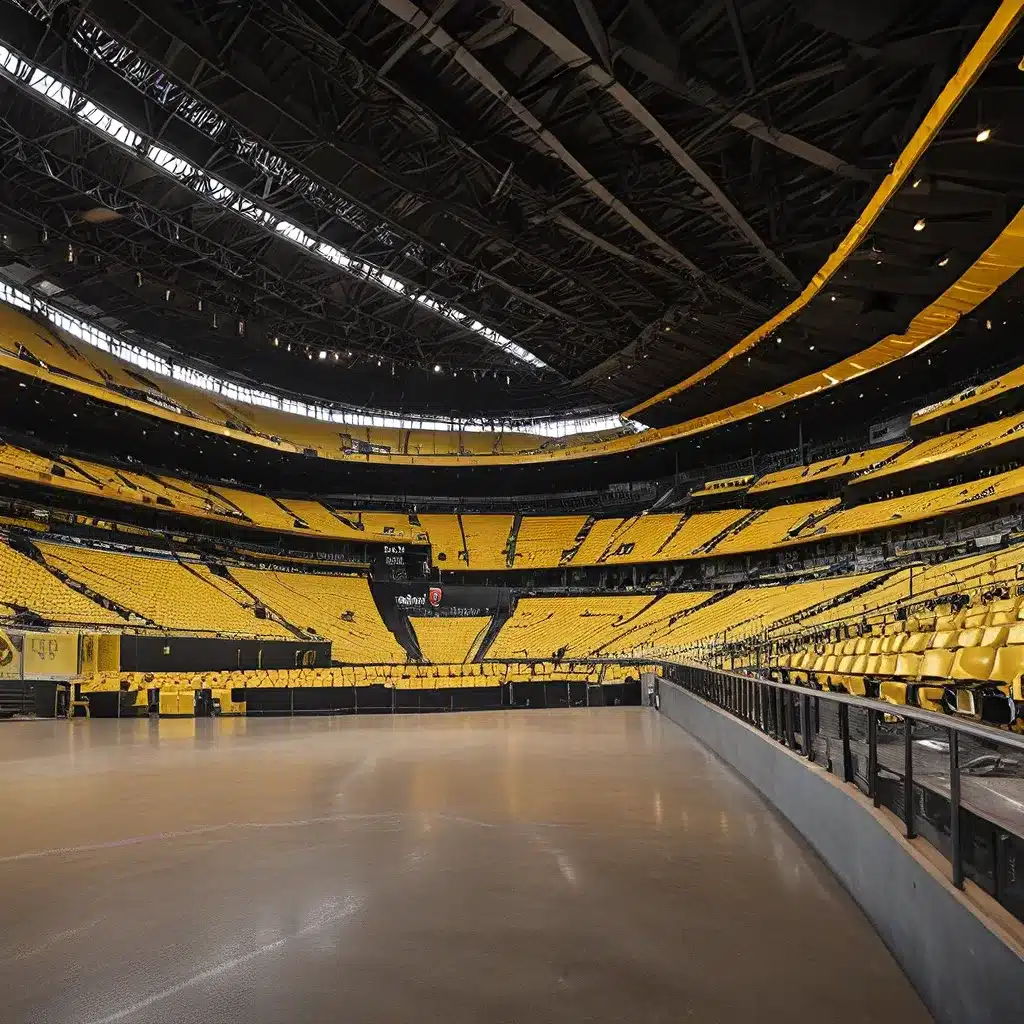
The Architectural Masterpiece in Dortmund
Signal Iduna Park, formerly known as Westfalenstadion, is a renowned football stadium located in Dortmund, Germany. As the home ground of Borussia Dortmund, one of the most successful and popular football clubs in the world, this stadium has become a symbol of the city’s rich sporting heritage and the unwavering passion of its devoted fans.
Constructed in 1974, Signal Iduna Park has undergone several transformations and expansions over the years, each stage adding to its architectural grandeur and enhancing the match-day experience for spectators. The stadium’s striking design, with its iconic curved roof and towering terraces, has earned it a reputation as one of the most visually impressive and atmospheric venues in the world of football.
The Evolution of a Legendary Stadium
The origins of Signal Iduna Park can be traced back to the 1920s when Borussia Dortmund’s predecessor, Ballspielverein Borussia 09, played their home matches at the Weisse Wiese, a modest pitch located in the heart of the city. As the club’s popularity grew, and the demand for a larger and more modern stadium increased, the city of Dortmund began plans for a new, state-of-the-art facility.
In 1971, the groundbreaking ceremony for the Westfalenstadion, as it was originally named, took place. The design of the stadium was a testament to the forward-thinking approach of its architects, who envisioned a structure that would not only serve as a world-class sporting venue but also integrate seamlessly with the surrounding urban landscape.
The stadium’s construction was a remarkable feat of engineering, with the curved roof design being a particular highlight. Innovative techniques were employed to create the iconic silhouette, which was not only visually striking but also highly functional, providing ample cover for the spectators and protecting them from the elements.
The Iconic Südtribüne and the Borussia Dortmund Faithful
One of the most distinctive features of Signal Iduna Park is the Südtribüne, or the South Stand, which is renowned for its enthusiastic and passionate supporters. This massive, standing-only terrace can accommodate up to 25,000 fans, creating an unparalleled atmosphere during Borussia Dortmund’s home matches.
The Südtribüne is not just a section of the stadium but a symbol of the club’s unwavering commitment to its supporters. The fans who occupy this area are known as the Südtribüne, and their chants, synchronized movements, and unwavering support have become an integral part of the Borussia Dortmund matchday experience.
The dedication and loyalty of the Südtribüne faithful have also inspired the club’s overall approach to fan engagement. Borussia Dortmund is widely recognized for its strong connection with its supporters, with initiatives such as affordable ticket prices, fan-focused events, and a commitment to maintaining the club’s identity and traditions.
Technological Advancements and Sustainability
As the stadium has evolved, Signal Iduna Park has also embraced technological advancements and sustainable practices to enhance the overall spectator experience and minimize its environmental impact.
In recent years, the stadium has undergone various upgrades, including the installation of a state-of-the-art LED lighting system, which not only provides better visibility and atmosphere during matches but also significantly reduces energy consumption. Additionally, the stadium has implemented measures to improve waste management and water conservation, contributing to its sustainability efforts.
One of the most impressive technological features of Signal Iduna Park is its energy-efficient heating and cooling system, which utilizes the stadium’s unique architecture to regulate temperature and improve the overall comfort of spectators.
The Significance of Signal Iduna Park
Beyond its architectural and technological achievements, Signal Iduna Park holds a deep significance for the city of Dortmund and the broader football community. As the home of Borussia Dortmund, the stadium has witnessed some of the club’s greatest triumphs, including their UEFA Champions League victory in 1997 and numerous Bundesliga titles.
The stadium’s impact extends far beyond the boundaries of the pitch, as it has become a hub for the local community, hosting various cultural events, concerts, and social initiatives. The stadium’s proximity to the city center and its integration with the surrounding urban landscape have made it an essential part of Dortmund’s identity, serving as a gathering place for residents and visitors alike.
Conclusion: A Lasting Legacy
Signal Iduna Park is a true architectural marvel that has stood the test of time, evolving and adapting to the changing demands of modern football. Its striking design, passionate fan base, and commitment to sustainability and technological innovation have cemented its status as one of the most iconic and influential stadiums in the world.
As Borussia Dortmund continues to write new chapters in its storied history, Signal Iduna Park will undoubtedly remain at the heart of the club’s legacy, inspiring generations of football enthusiasts and serving as a testament to the power of sport to unite and captivate communities. Visitors to Old Stadium Journey can experience the magic of this legendary stadium for themselves, immersing in the rich history and unforgettable atmosphere that make Signal Iduna Park a true mecca of the beautiful game.

